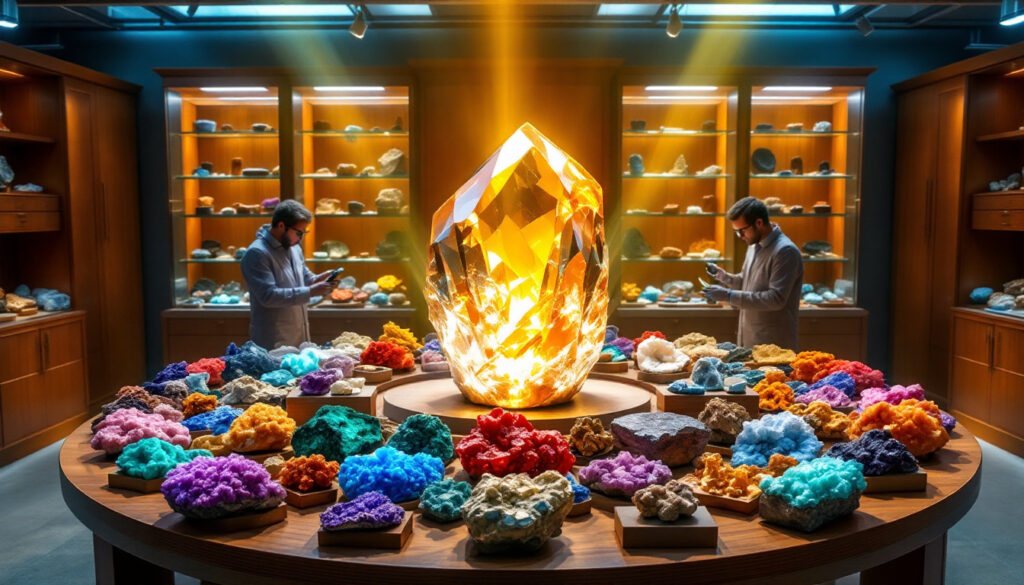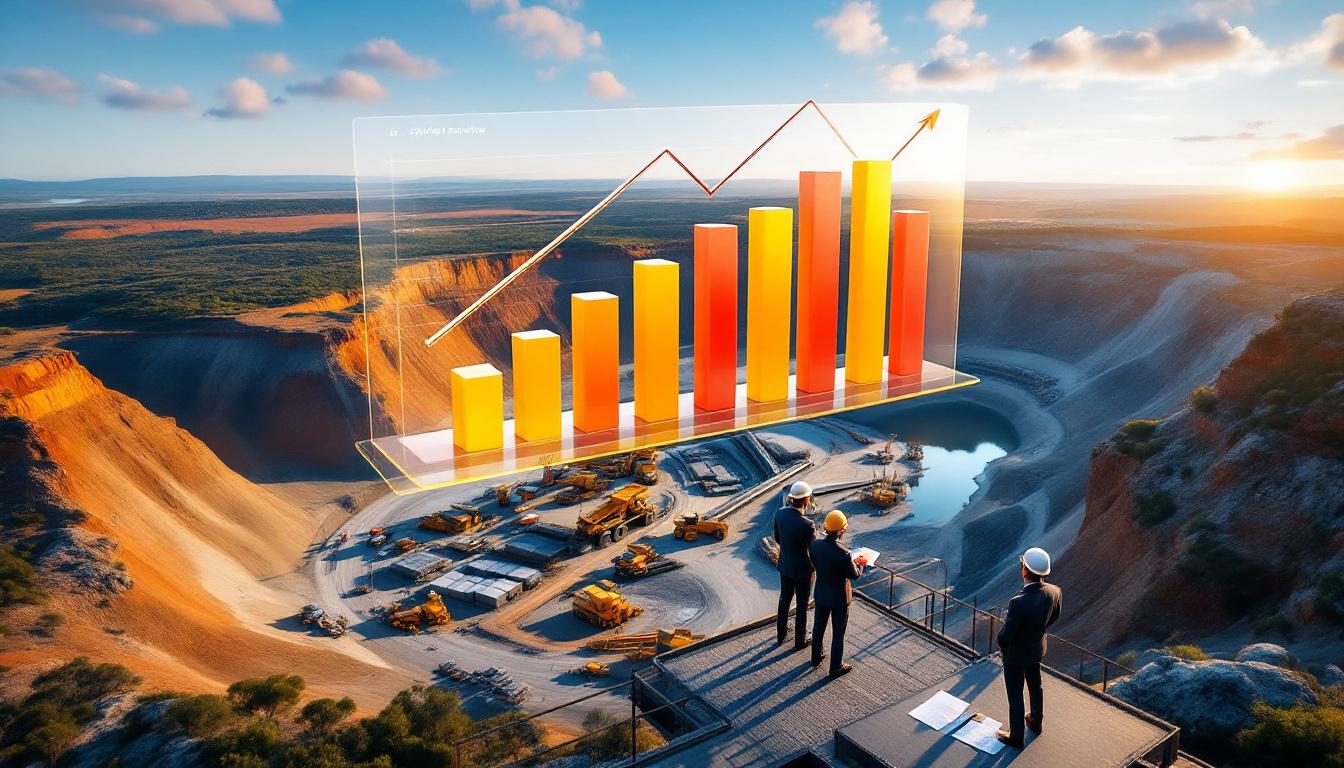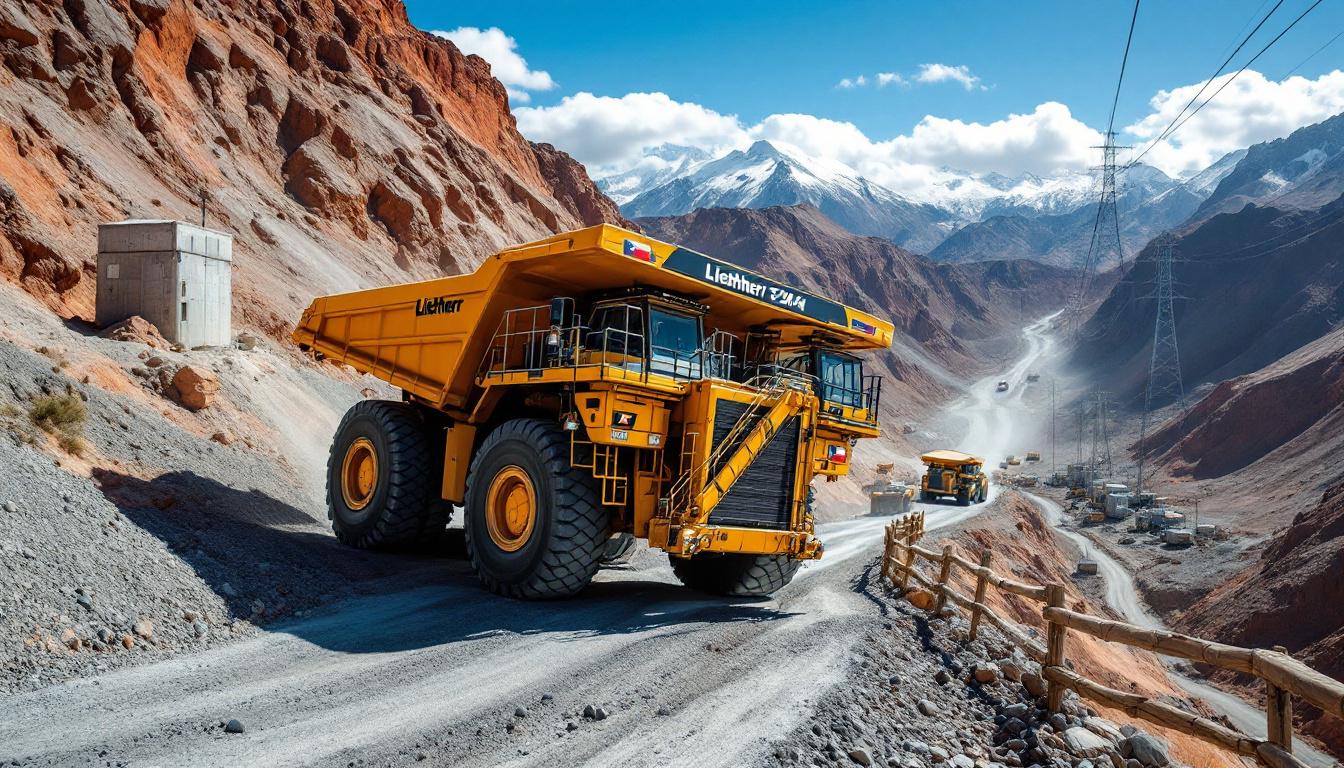How Did This Significant Collection Begin?
The Catalyst of Childhood Curiosity
Every remarkable journey begins with a single step – or in this case, a single stone. The origins of this world-class rocks and minerals collection donation can be traced back to a childhood fascination with a large piece of petrified wood discovered on a grandfather's farm in Southeast Queensland. This natural wonder, with its perfectly preserved wooden structure transformed into stone through millennia of mineral replacement, sparked an enduring curiosity about Earth's geology of ore deposits.
At the tender age of 10-11, what would eventually become an internationally significant collection began modestly with basic specimens like granite and basalt. These common rocks, representing the fundamental building blocks of Earth's crust, provided an accessible entry point into the world of mineralogy and geology.
Weekend visits to the Queensland Museum in Brisbane proved instrumental in developing this budding interest. Museum curators, recognizing genuine curiosity, allowed unprecedented access to specimen drawers typically off-limits to the general public. This behind-the-scenes experience provided hands-on learning opportunities rarely available to young enthusiasts and helped establish proper identification and cataloging practices from an early stage.
The teenage years brought membership in a Brisbane lapidary club, where the fundamentals of gemstone identification and polishing techniques were mastered. This practical knowledge of how to cut, shape, and polish stones would later prove invaluable when preparing specimens for analysis and display, establishing conservation protocols that would preserve the collection's scientific value for decades.
From Hobby to Professional Connection
What began as childhood fascination evolved naturally into a professional career in exploration geology spanning seven continents. This global perspective allowed the collection to grow not just in quantity but in diversity, representing mineral formations from Arctic permafrost to African savanna.
A particularly innovative contribution to geological field practice came through the implementation of "slab libraries" on major exploration projects. Unlike traditional core samples, these slabs – rocks cut to reveal their internal structures – provided immediate visual reference for field teams. This practical storage method, using cut surfaces in core boxes, facilitated team analysis without requiring specialized equipment.
"The value of seeing a full cross-section of mineral formations cannot be overstated," noted the collector. "What might look like ordinary rock on the surface often reveals complex mineral structures when cut, particularly in identifying microscopic gold occurrences that would be invisible in raw samples."
This approach enhanced the visibility of mineral textures and gold occurrence patterns, allowing field geologists to make drilling results guide interpretations and make real-time adjustments to exploration strategies. The practice, now widely adopted in the industry, demonstrates how personal passion for mineral specimens translated into practical innovations with significant commercial applications.
The Evolution of a World-Class Collection
Growth and Development
By the early 2000s, the collection had found a home in an office in Thailand, where the sheer scale of the assemblage became apparent. Housing over 20,000 specimens from mining projects worldwide, the collection required 27 custom-built teak cabinets, each containing 50 meticulously organized drawers. This represented not just a personal collection but a comprehensive archive of global mineral diversity.
The specimens represented deposits from virtually every significant mining region across the globe – from the copper belts of Central Africa to the gold fields of Western Australia, from the silver deposits of Mexico to the rare earth elements of China. Each specimen was carefully labeled with location data, geological context, and collection date, creating an unparalleled resource for comparative mineralogy.
"What made this collection scientifically valuable wasn't just the quantity or even the quality of specimens, but the comprehensive documentation," explained a curator familiar with the collection. "Having precise location data, collection dates, and geological context transforms pretty rocks into scientific data points."
Preservation Concerns
As the collector approached age 60, a critical decision point emerged regarding the collection's future. With family members not positioned to maintain such a massive and scientifically significant assemblage, concerns about preservation and integrity became paramount. The specialized knowledge required to properly care for and catalog such specimens meant that proper institutional housing was essential.
Initial research into potential museum and university homes revealed significant challenges. Many institutions lacked dedicated storage facilities for such large collections, while others had policies of breaking up donations to integrate them into existing collections – an approach that would have diminished the comparative value of having specimens from related deposits housed together.
The preservation concerns extended beyond physical storage to the maintenance of the collection's scientific integrity. Without proper curation, even well-preserved specimens can lose their research value if disconnected from their contextual information – the geological equivalent of ancient artifacts without provenance.
The Royal Ontario Museum Partnership
Establishing the Connection
The turning point came in 2011 through industry connections that led to an introduction to the Royal Ontario Museum (ROM), one of North America's premier natural history institutions. The ROM's reputation for excellence in mineralogical research and public education made it an ideal candidate for housing the collection.
An appraisal visit by ROM representatives to Thailand confirmed the collection's scientific significance. Their assessment highlighted not just individual spectacular specimens but the comprehensive nature of the collection as a whole – representing complete mineral suites from deposits worldwide that would be impossible to assemble today due to mine closures and access restrictions.
A key requirement from the donor was that the collection must remain intact rather than being sold off in pieces or absorbed piecemeal into existing collections. This stipulation ensured the preservation of the collection's comparative value, allowing researchers to study mineral variations across similar deposit types from different geographical regions.
Funding secured through Y Gold provided the necessary resources to support proper curation, cataloging, and storage of the massive collection. This partnership between a private donor, corporate sponsor, and public institution demonstrates an effective model for preserving significant geological collections for future generations.
The Logistics of Transfer
The physical transfer of over 20,000 specimens presented formidable logistical challenges. A meticulous packing process took approximately 10 days, with each specimen carefully wrapped and cataloged. Rather than using traditional museum crates, the team innovatively employed stackable fish crates, which provided excellent protection while maximizing space efficiency during shipping.
"We tested multiple container options before settling on the fish crates," explained the collector. "Their design allowed for secure stacking while the ventilation holes prevented moisture buildup – a critical consideration when shipping minerals that can be sensitive to humidity changes."
The comprehensive cataloging process involved creating country-specific spreadsheets documenting each specimen's origin, geological context, and physical characteristics. This digital inventory, comprising thousands of entries, would later prove invaluable to researchers seeking specific examples of mineral formations.
After an eight-month journey, the container arrived intact at the ROM, with not a single specimen damaged in transit – a testament to the careful planning and packing protocols developed specifically for this collection. This successful transfer represents one of the largest single mineral collection donations in the museum's history.
What Makes This Collection Unique?
Notable Specimens
While the scientific value of the collection lies in its breadth and documentation, several spectacular specimens stand out for their exceptional quality and rarity. Among these is a 25-kilogram topaz crystal from Pakistan, representing one of the largest gem-quality specimens of its kind ever discovered in the region.
Multiple gem-quality topaz specimens showcase the mineral's various color expressions, from colorless to blue and amber varieties. One specimen was sent to Germany for cutting by master lapidaries in Idar-Oberstein, renowned worldwide for their expertise in handling precious minerals. This process resulted in a stunning 500-carat gem currently on display in the ROM's galleries, drawing visitors from around the world.
"What makes the topaz specimen particularly significant isn't just its size or clarity, but its geological context," noted a gemologist familiar with the collection. "Having documentation of exactly where and how it was formed provides invaluable insight into the conditions necessary for producing gem-quality crystals."
Beyond individual showpieces, the collection contains diverse ore samples from mines and prospects globally, many from deposits that are no longer accessible due to mine closures or exhaustion. These specimens provide a permanent record of geological formations that future geologists might otherwise never have the opportunity to study firsthand.
Second Collection Addition
Years after the initial donation, a subsequent collection was shipped to further enhance the ROM's holdings. This second donation, currently being processed and labeled at the museum, complements the original collection with specimens from newer discoveries and different deposit types.
This ongoing relationship between donor and institution demonstrates how mineral collections can evolve over time, with new additions enhancing the scientific and educational value of the original donation. The continued involvement of the collector in facilitating this growth ensures that the knowledge associated with each specimen is properly transmitted along with the physical samples.
How Is the Collection Being Utilized?
State-of-the-Art Storage and Access
The ROM has honored the collection's scientific importance by creating purpose-built storage cabinets specifically designed for mineral preservation. These facilities feature climate control systems that maintain optimal temperature and humidity levels to prevent specimen deterioration.
Dedicated curation facilities with easy access systems allow researchers and students to quickly locate specific specimens among the thousands housed in the collection. Unlike many museum collections that remain largely inaccessible in storage, this rocks and minerals collection donation was explicitly designed with accessibility in mind.
A classroom space adjacent to the storage area facilitates hands-on learning, allowing students to examine specimens in their proper context rather than viewing isolated samples. This integration of storage and education spaces represents a forward-thinking approach to collection management.
Each ore specimen is well-labeled with information about its origin, mineral composition, and geological significance. This detailed documentation transforms the collection from a mere assemblage of interesting rocks into a comprehensive research database of global mineral deposits.
Educational Programming
The collection has become the centerpiece of numerous educational initiatives at the ROM. Short courses and workshops held in the collection facility follow a methodology balancing theoretical knowledge with practical examination – typically 50% lecture content paired with 50% hands-on specimen study.
University teaching programs regularly utilize the collection, giving geology students unprecedented access to specimens representing virtually every major deposit type. This exposure to real-world examples bridges the gap between textbook learning and field experience, preparing students for careers in mining, environmental geology, and research.
Industry training and continuing education programs also benefit from the collection, allowing professional geologists to study comparative samples from deposits worldwide without extensive travel. This resource has proven particularly valuable for companies developing exploration strategies in regions with similar geological characteristics to well-documented deposits represented in the collection.
What Educational Impact Has the Collection Made?
Workshop Success Stories
The first workshop utilizing the collection was held two years prior to this report, drawing immediate interest from across the geological community. Participants ranged from undergraduate students to senior industry professionals, creating a unique learning environment where knowledge flowed in multiple directions.
Specialized presentations by experts like Bill Chavz on the importance of gossan (weathered surface material that can indicate mineral deposits below) demonstrated how the collection facilitates focused training on specific aspects of economic geology. These targeted sessions allow participants to examine dozens of related specimens side-by-side, comparing variations that might take years to encounter in field settings.
The Volcanogenic Massive Sulfide (VMS) course, focusing on economically crucial ore deposit types, has been consistently fully-subscribed since its inception. This high demand reflects both the quality of instruction and the unparalleled access to relevant specimens that the collection provides.
Participant Demographics
One of the most remarkable aspects of the educational programs has been the diverse mix of participants they attract. University students learning fundamental concepts interact with early career professionals applying those concepts in the field, while senior industry members provide historical context and practical insights from decades of experience.
This collaborative learning environment creates unique knowledge exchange opportunities across experience levels. Senior geologists share practical field identification techniques, while students often bring fresh theoretical perspectives from current academic research.
"The intergenerational knowledge transfer happening in these workshops is perhaps their most valuable aspect," noted one participant. "Seeing how different professionals approach the same specimens provides insights you simply can't get from textbooks or even field experience alone."
FAQs About Rock and Mineral Collection Donations
What should I consider before donating my rock collection?
Preservation of collection integrity should be a primary consideration for potential donors. Many institutions may wish to incorporate specimens into existing collections rather than maintaining donated collections as cohesive units. If maintaining the collection's unity is important to you, this should be clearly articulated in preliminary discussions.
Proper curation and storage capabilities vary significantly between institutions. Before committing to a donation, visit the potential recipient's facilities to assess their storage conditions, preservation protocols, and accessibility policies. Collections requiring specialized care may be better suited to institutions with dedicated mineralogical departments.
Educational and research potential often determines how actively a donated collection will be utilized. Collections with comprehensive documentation, rare specimens, or examples from inaccessible localities generally have greater teaching and research value than common specimens readily available elsewhere.
Long-term institutional commitment should be secured through formal agreements that specify how the collection will be maintained and utilized over time. Consider institutions with established endowments or funding mechanisms that ensure continued care regardless of changing budget priorities.
How are donated collections typically valued?
Expert appraisal by museum specialists typically considers factors beyond simple market value. Scientific significance, research potential, and educational utility may substantially increase a collection's institutional value even when individual specimens might not command high prices on the commercial market.
Assessment of specimen rarity and quality forms the foundation of most valuations. Particularly significant specimens – whether due to size, crystal perfection, color, or other distinguishing characteristics – may constitute a substantial portion of a collection's total value.
Educational and research potential significantly impacts institutional valuations. Well-documented collections that represent comprehensive sampling of specific localities or geological phenomena may be valued higher than assemblages of showpieces lacking contextual information.
Evaluation of documentation and provenance can dramatically affect valuation. Collections with detailed location data, collection dates, and associated field notes generally receive higher valuations than similar specimens lacking this information.
What documentation should accompany a mineral collection donation?
Detailed inventory with specimen identification provides the foundation for proper curation. At minimum, this should include accurate mineral names according to current nomenclature, but ideally would also note distinguishing physical characteristics of each specimen.
Location information for each specimen, including as precise geographical coordinates as possible, greatly enhances scientific value. For mining districts, specific mine names and collection levels provide crucial context for research applications.
Acquisition dates and methods help establish the provenance of specimens and may have legal implications, particularly for materials collected from protected areas or across international boundaries. This information also provides historical context for the collection.
Historical or scientific significance notes might include information about unusual formation conditions, associations with significant geological events, or connections to important ancient to modern mining operations or discoveries. These details transform specimens from mere objects into scientific data points.
How can donors ensure their collections will be properly utilized?
Establish clear agreements about display and research access before finalizing donations. Written understandings regarding the percentage of specimens to be exhibited, conditions for loans to other institutions, and researcher access protocols help ensure alignment between donor intentions and institutional practices.
Discuss educational programming possibilities with potential recipient institutions. Collections with strong educational potential may be incorporated into existing teaching programs or might inspire new workshop offerings focused on the collection's particular strengths.
Consider providing funding for proper curation and maintenance alongside physical specimens. Even institutions with strong commitments to collection care face budget constraints, and designated funds can ensure that donated materials receive appropriate attention and conservation.
Request regular updates on collection usage through annual reports or similar communications. These updates allow donors to stay connected with their collections' ongoing impact and provide opportunities to enhance educational programming through continued involvement.
For those interested in viewing exceptional mineral collections, the Australian Museum minerals exhibition offers an outstanding display of specimens from around the world. Additionally, institutions like the National Rock Garden provide opportunities for enthusiasts to support geological preservation through various donation programs.
As AI in mineral exploration advances, these historical collections become even more valuable, providing training data for algorithms that can identify mineral patterns and predict deposits based on characteristics of known samples. The Northparkes mine insights demonstrate how established mining operations continue to benefit from careful study of mineral assemblages and their relationships.
Curious About Investing in the Next Major Mineral Discovery?
Discovery Alert instantly identifies significant mineral discoveries on the ASX using its proprietary Discovery IQ model, giving subscribers a crucial edge. Explore why major discoveries can lead to substantial returns by visiting the Discovery Alert discoveries page and position yourself ahead of the market.




